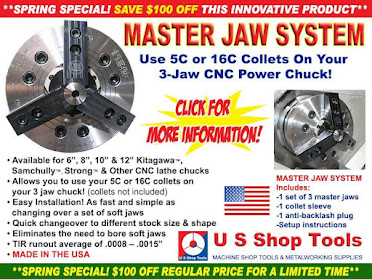5 Reasons Why Machine Shop Ownership Is Changing
Why is this happening? I believe several factors are coming together at once, some of them obvious and some less so. The aging into retirement of shop owners of the Baby Boom generation is obviously a contributing factor, but perhaps less of a factor than we might imagine. Industry as a whole, across various market sectors, has been slowly changing in the way it views, values and organizes manufacturing and machining. That, combined with demographics, as well as technology, is producing these shifts in who owns and runs machine shops.
Also
Read : Top
12 Machine Learning Tools
What
follows is a bigger picture. Here are more of the factors I believe
contribute to this trend:
1. Demographics
We all understand this one. A large cohort of the population, including a
large share of machine shop owners, was born between 1946 and 1964. They are at
or close to retirement age now. Read this also soft
jaws manufacturer
This transition has come more slowly than expected. Wisdom in how to size
up a machine tool or a machining job, as well as the trust of connections who
are sources of machining work, all are assets that improve with age. Some shop
owners approaching 65 found themselves at the most valuable parts of their
careers, so they continued.
2. Systemization
The way the leaders of machining facilities think about these
organizations has fundamentally changed in some cases. Is a machine shop a
collection of machine tools run by skilled people adept at applying them? Maybe yes. In this view, the machines
matter a great deal in defining the shop. Or, instead, is a machine shop the
set of resources that is governed by an enterprise-wide system for making
parts? The distinction might seem subtle, but it is meaningful for shop leaders
who have made this shift.
And market-specialized quality standards
such as AS-9100 encourage this paradigm change. In the latter view of the machine
shop, the machine tools matter, but the system matters more — and
machines and people succeed according to how well they work effectively within
the system.
This better defining and disciplining of how a machining facility runs
results in shops that function more like integrated units rather than islands
around each machine, and therefore it results in shops that are easier to
redeploy for new purposes or new owners. The system itself, once proven, might
also be the template for building upon an acquired
shop.
One category of technology is so valuable
here that it might merit attention as a separate item on this list: enterprise
resource planning (ERP) software. Shops have gotten more serious about ERP in recent years. Commitment to an ERP
system, and using that system to organize all a shop’s departments and
operations, makes it easy for a shop to integrate its efforts with those of
another shop in another location running on the same platform. If two shops
have the same ERP system and follow the same commitment and conventions in
using it, then in a very real way their language, culture and thinking are
close to alike.
3. Reshoring
Cases of parts machined overseas that have literally been relocated to
the U.S. might be uncommon, but that narrow view of reshoring overlooks the
extent to which decisions about new production frequently favor domestic
manufacturing. Manufacturing is migrating as new work gradually replaces old —
a shift that was underway even before the pandemic taught the nation about
supply chain vulnerability — and that migration favors acquisition. OEMs that
want to hold manufacturing closer either acquire manufacturers who were
formerly independent, or seek domestic suppliers that are large enough (perhaps
because of their own merger or acquisition) to efficiently supply their needs.
4. Changing Attitude
The negative spirit once associated with manufacturing — dreary work, in
decline, etc. — is now largely gone. That impression, as false as it always may
have been, had an effect on the desirability of investing in manufacturing, and
this cloud is lifting. Explorer Cobot
Integration
Today, the view of manufacturing by people under 40 is more fair. Plenty
recognize it as an area of opportunity, an area of advancing technology such as
additive manufacturing and the chance for significantly greater automation, and
a pursuit that is in ascendancy given the trends of reshoring and reexamination
of supply chains. Both financial investors looking for growth opportunities and
entrepreneurial investors looking to commit their energy and attention are
drawn to manufacturing now.
5. Changing Reach
Machining used to be more regional. In earlier decades, a shop was more
likely to get its work from customers in and around its home city. For many
shops, of course, this is still true. But to a large extent, shops have shifted
their attention outside their communities, focusing instead on customers
nationally within the sectors the shop can serve well. And several pressures
arise from this change in focus.
For example, within a region, a shop offering limited types of machining
services can find the work just for these operations. But OEM customers outside
the region are likely to prefer a one-stop shop with many services — a need
encouraging the shop to merge or acquire. In addition, focusing on a particular sector leads to
sector-specific costs that are easier to amortize across a larger organization
(back again to quality certifications). Then there is simply sales and
marketing: This, too, becomes a more sophisticated effort that makes more sense
in the service of a larger organization.
In
other words, much more than demographics is happening to drive machine
shops’ changes in ownership. A new generation of shop owners is arriving, to be
sure. But at the same time, shops are acquiring and being acquired because
opportunities favor this, because technology and systemization facilitate it,
and because how we think about machining has changed.




Comments
Post a Comment